Lou Reed and the 2006 Web 2.0 Summit
At the Web 2.0 Summit, I get advice about my growing blog business, miss a breakfast meeting with a VC, and get my ears blown out by Lou Reed. The business opportunities of Web 2.0 are opening up.
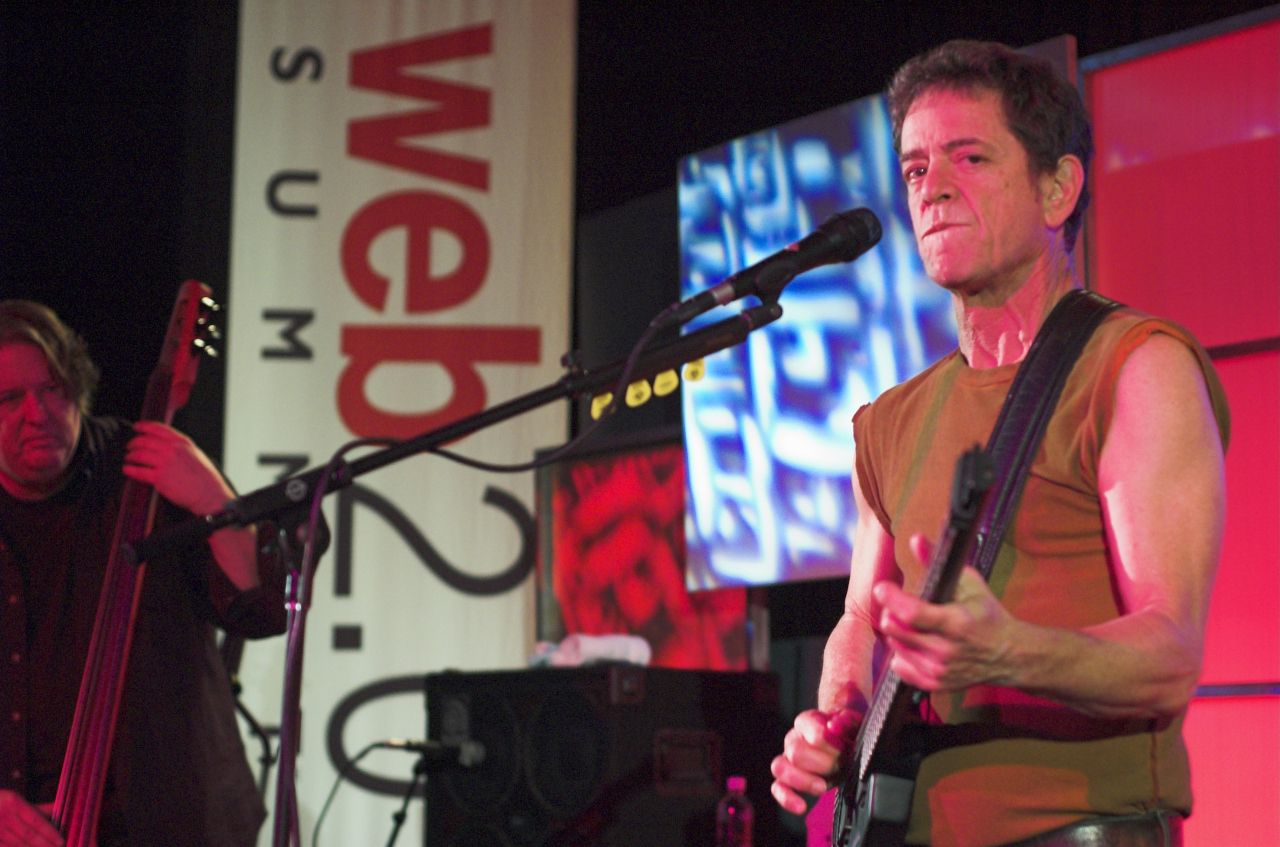
In early November I was back in Silicon Valley to attend the annual Web 2.0 Conference, now renamed Web 2.0 Summit, and with the theme of “Disruption & Opportunity.” The name change was because the organizers, O’Reilly Media and John Battelle, were expanding and had added a companion trade show, Web 2.0 Expo, that was to launch the following year. It was a sign of the times: by November 2006 lots of business opportunities were opening up in the Web 2.0 ecosystem.
Several significant developments had emerged in Web 2.0 in the couple of months leading up to the summit. In September, Facebook introduced its “news feed” and opened sign-ups to anyone over age thirteen with an email address. I didn’t sign up at that time, though; I was still more interested in RSS than social networks. In late September, a redesign of Google Reader was launched and I wrote an overexcited blog post about it. “It now has a look n’ feel very much like Gmail,” I gushed, adding that I thought Google Reader might soon be merged with Gmail.
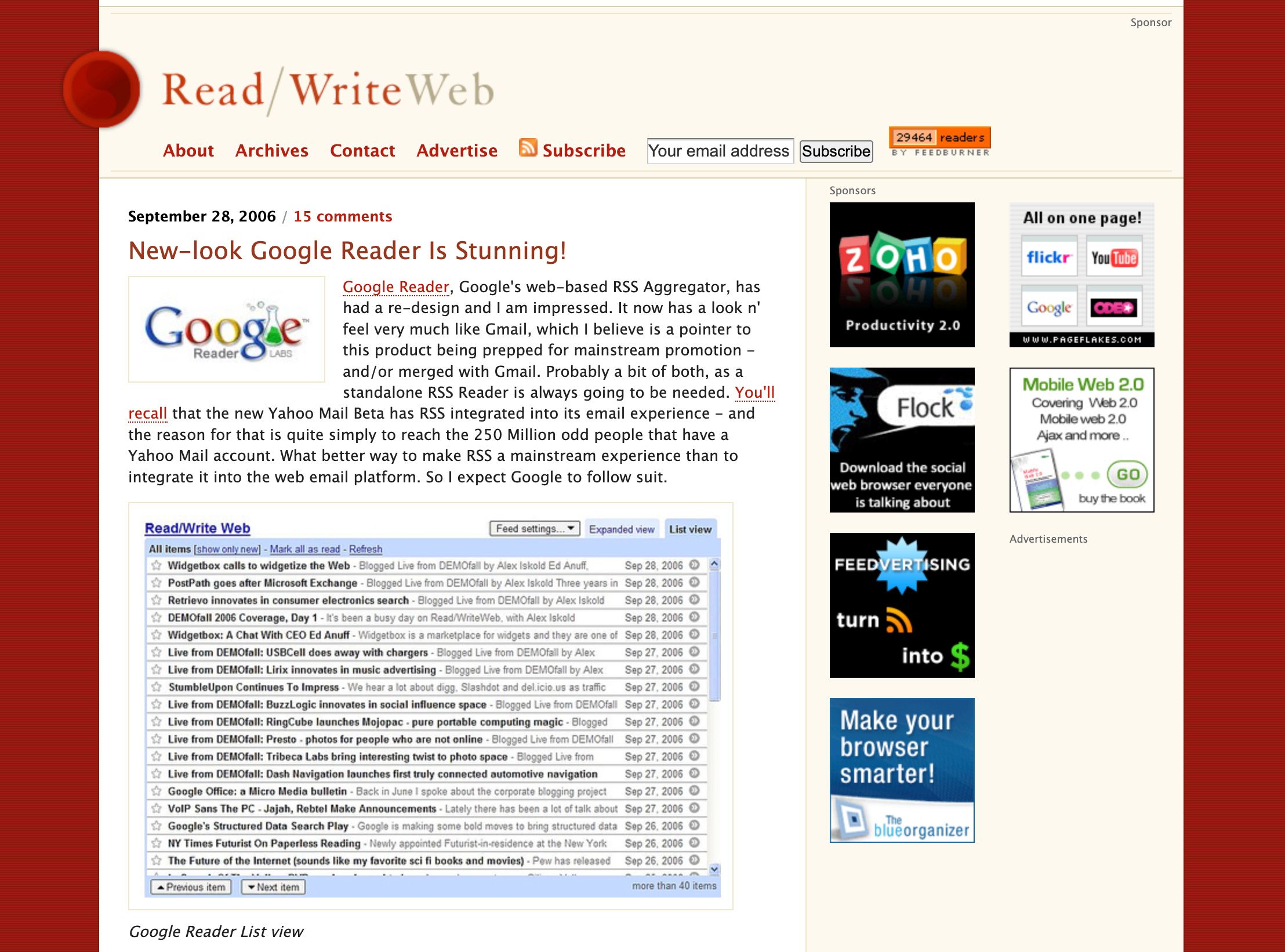
Google was starting to piece together a lot of things by this point. In August it released “Google Apps for Your Domain,” a set of apps for organizations that included Gmail, Google Talk, Google Calendar, and the Google Page Creator. Then in early October it launched “Google Docs & Spreadsheets,” an online word processor and spreadsheet. Slowly but surely it was creating an entire suite to compete with the mighty Microsoft Office.
At the same time, Google was further entrenching itself as the dominant consumer web company. In October it acquired the leading online video startup, YouTube. It was the first big acquisition of the Web 2.0 era, since the $1.65 billion price tag was the first purely web M&A to go over a billion dollars since Netscape back in 1999. I remember feeling some shock over the amount Google paid for YouTube, but it turned out to be one of the deals of the century; in later years, the video platform would routinely earn revenue in the tens of billions of dollars per year.
Not to be outdone by Facebook or Google, a BusinessWeek cover story in early November outlined Amazon’s bold new web services strategy. For the first time, it became clear that Amazon saw itself as much more than an e-commerce retailer. Now, at the height of Web 2.0, it was renting out its software infrastructure stack to startups and other companies as “web services.” As Alex Iskold put it in a RWW post, “Amazon is beginning to look more like an alternative Microsoft for the web computing era.”
There was so much to write about, so it’s no coincidence that I was just about all-in on Read/WriteWeb when the Web 2.0 Summit rolled around. RWW had five sidebar sponsors by the end of October, and FM Publishing’s ads were finally beginning to bring in half-decent money. The bulk of my income was now coming from RWW, so naturally that’s where most of my energy was going.

By the time I arrived in San Francisco in early November, I’d basically ditched my ZDNet blog (although I gave them one final post later that month). I was still on a monthly retainer from Micro Media Corp, but I viewed that as a part-time endeavor. As for the consulting work that had helped keep me afloat over the past year, I was only doing a bit of that now. I’d dropped the technical writing work from Marc Canter and didn’t have time to do research or analysis reports for others. I’d made an exception for my Irish friend Fergus Burns, who was giving me $1,000 per month to be a regular adviser to his RSS services company Nooked, along with the promise of a tiny bit of equity.
Fergus was also kindly putting me up during the first portion of my US trip. He’d booked a double room for us at the Hotel Nikko, so I would be rooming with him for five nights before heading to Mike Arrington’s place at the end of the week for the last few nights of my trip. I’d told Fergus I was looking forward to staying in the city this time around so that I could attend the post-conference parties—“Traveling to and fro from the valley put a dampener on that last time,” I said.
Aside from the increased opportunities for socializing, I was also beginning to get serious about the growing value of RWW. I planned to talk to my US contacts about expansion plans—maybe even talk with VCs about funding. In October I’d chatted to Mike about potentially selling my business to him, although the discussions didn’t get very far. He’d offered to buy RWW for a 5 percent equity stake in TechCrunch, along with a $60,000 salary to work for him. I countered by asking for a 10 percent stake in TechCrunch and at least a $100,000 base salary. I wasn’t sure if I wanted this, though, because I enjoyed being independent and I didn’t want to subjugate myself to anyone—let alone Mike, whom I saw as my equal even though his blog was more successful than mine. But this halfhearted negotiation with Mike (he didn’t even respond to my emailed counter) at least got me thinking about the value I was building with RWW.
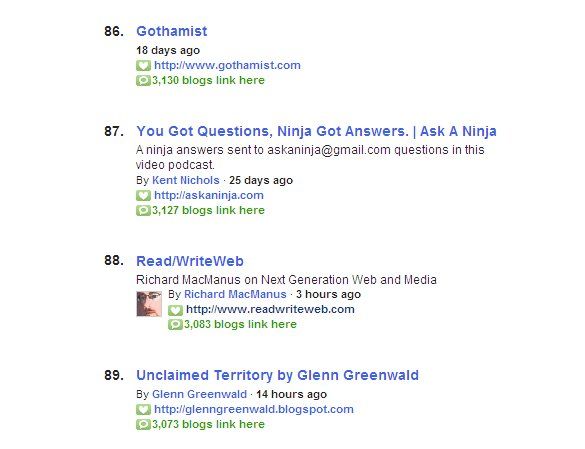
Fergus made some interesting points when I told him about my stalled discussions with Mike. (Fergus and I were the same age, but he seemed to have a much better head for business than I did.) He suggested I commercialize the research work that I was doing for Nooked—and had been doing for a bunch of others before RWW got so busy. Why not setup an entity called RWW Research, he suggested, and then do a deal with Mike to sell the reports through TechCrunch as well as RWW? It was a good idea, and it would also get me back doing the type of product development and market research work that I had so enjoyed. But to pull this off, I would need help. I needed to speak to some investors to get my head around this expansion opportunity.
Fortunately, Alex Iskold—now a regular guest blogger—introduced me via email to an investor he knew: Josh Kopelman of First Round Capital, one of the leading Web 2.0 VCs. Unfortunately, I accidentally blew off a meeting with him on Wednesday morning. I was to meet Josh for breakfast at 7:30 a.m. that morning, at Maxfield’s in the Palace Hotel. But after a late night of boozing with Fergus and my other Irish entrepreneur friends, I slept through my alarm. Probably one too many pints at the Swig bar on Geary Street.
I didn’t have a US phone, so it was only when Josh emailed that I realized my error. I replied that “For some reason I had thought our meeting was tomorrow morning” (a thin excuse) and asked if he was free later that day. He was very gracious in response. “My day today is pretty jammed,” he wrote back, “but if you have time, feel free to head up to our meeting room (Sonoma room on the second floor) and we can try to grab 5 minutes.”
It is a measure of my utter immaturity at this time that I continued to avoid meeting Josh, even when I had the opportunity to pop into the Sonoma room at the Palace Hotel. Later that day, on the way to another session or to an interview, I walked past the Sonoma room. However, I made the mistake of furtively looking in—only to see Josh looking directly back at me! My face reddened with embarrassment, and I quickly looked away. After I’d passed the room, I shook my head in frustration. It was now out of the question that I would meet him. Clearly, I did not respect the rules of Silicon Valley etiquette and no sane VC would ever invest in me.
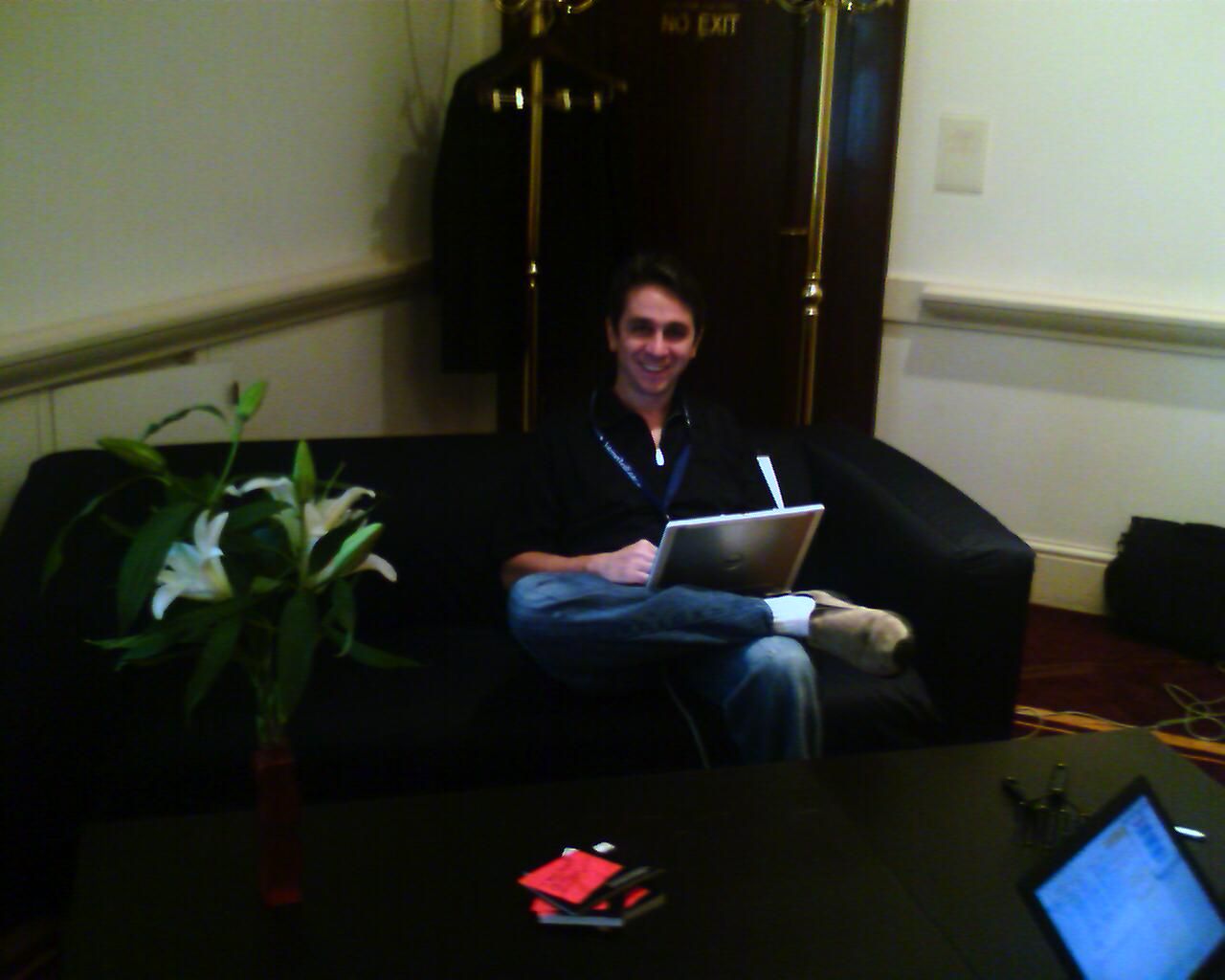
Happily, I eventually connected with Josh at the end of the month, by phone, when I was back in New Zealand.
I had a busy Web 2.0 Summit, meeting with companies like Microsoft, About.com, Ask.com, and Automattic (which ran Wordpress.com). I asked for business advice from Toni Schneider, the CEO of Automattic, who had recently started up a VC firm called True Ventures. I knew that True Ventures had invested in GigaOm, the tech blog founded by longtime Silicon Valley journalist Om Malik. Even though GigaOm was a competitor to RWW, I was friendly with Om and had also talked to Toni before, so I knew Toni would be straight up with me.
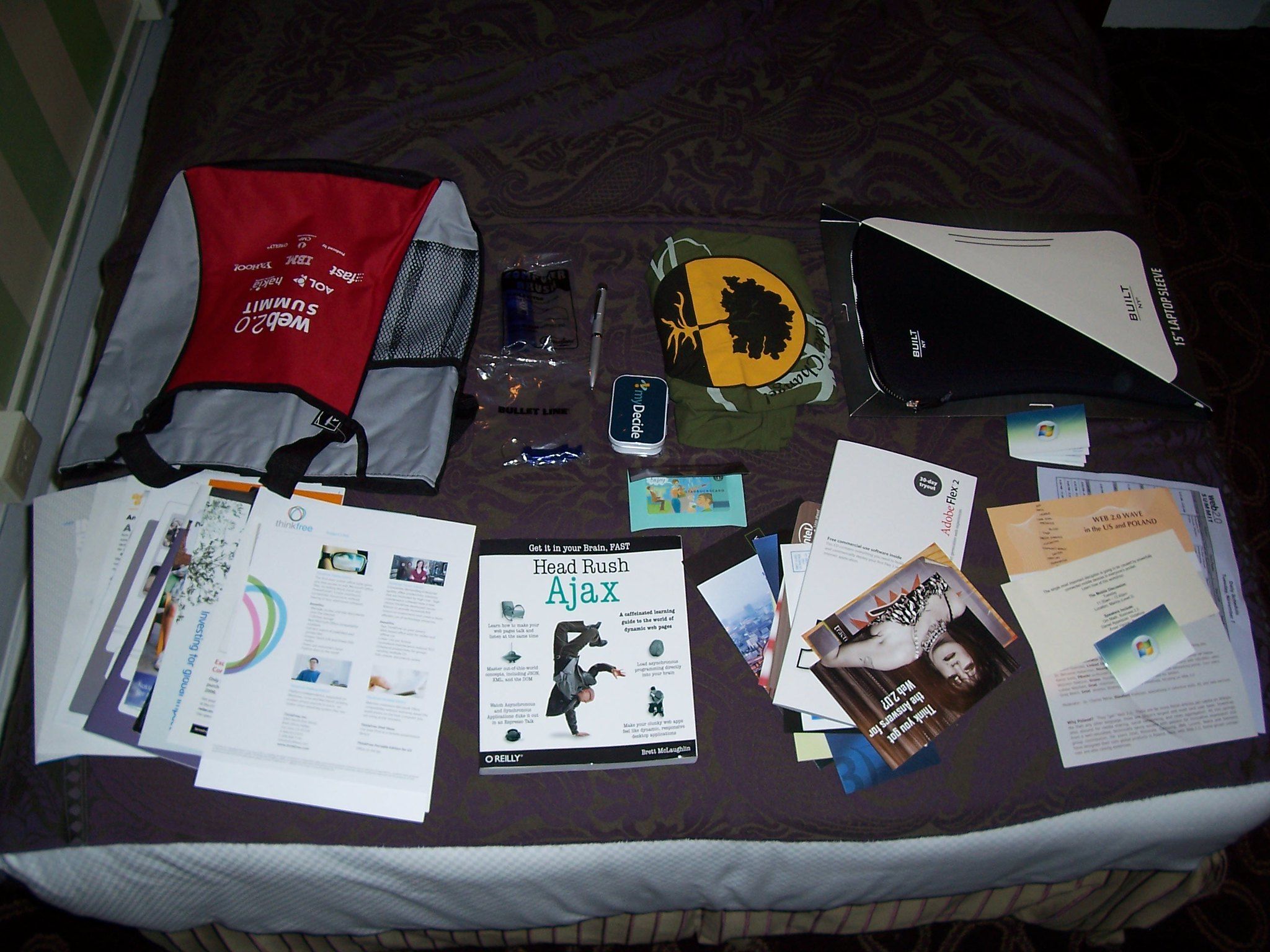
His advice was to stick with my focus on quality, in-depth coverage of tech news. Nobody was doing analysis of the Web 2.0 space like I was, he said. He suggested I expand by writing about related topics like the mobile web (then still very much in its infancy; little did we know that in just two months, Steve Jobs would unveil the iPhone).
We discussed an idea that was thriving in the pro blogger community: running a network of blogs on niche topics related to the main blog. The idea was that if I started a mobile blog, for example, I’d hire someone to write the posts and then I would handle the business side of it. Both TechCrunch and GigaOm had networks, although each did it in a different way. Mike had started a couple of separately branded blogs, CrunchGear (a copy of Engadget) and MobileCrunch (about the mobile web), edited by hired bloggers. Om hired bloggers to cover niche topics, such as online games, under his main GigaOm brand. Toni said Mike’s approach was the better strategy, since I’d be able to cross-link from RWW—this would drive my core audience to the new products and also build up Google juice for their domains. Most surprisingly, given his role as a True Ventures partner, Toni also advised me to bootstrap for as long as possible. VC funding changes everything, he warned.
As the Web 2.0 Summit drew to a close, I reflected that the vibe felt different this year. “Last year there were a lot more developers and designers running around, this year the crowd was overwhelmingly from the media and business worlds,” I wrote, although I added that I still enjoyed the conference. While I felt that the Web 2.0 Summit “lacked in cutting edge new products,” the networking made it all worthwhile—despite my failure to meet Kopelman.
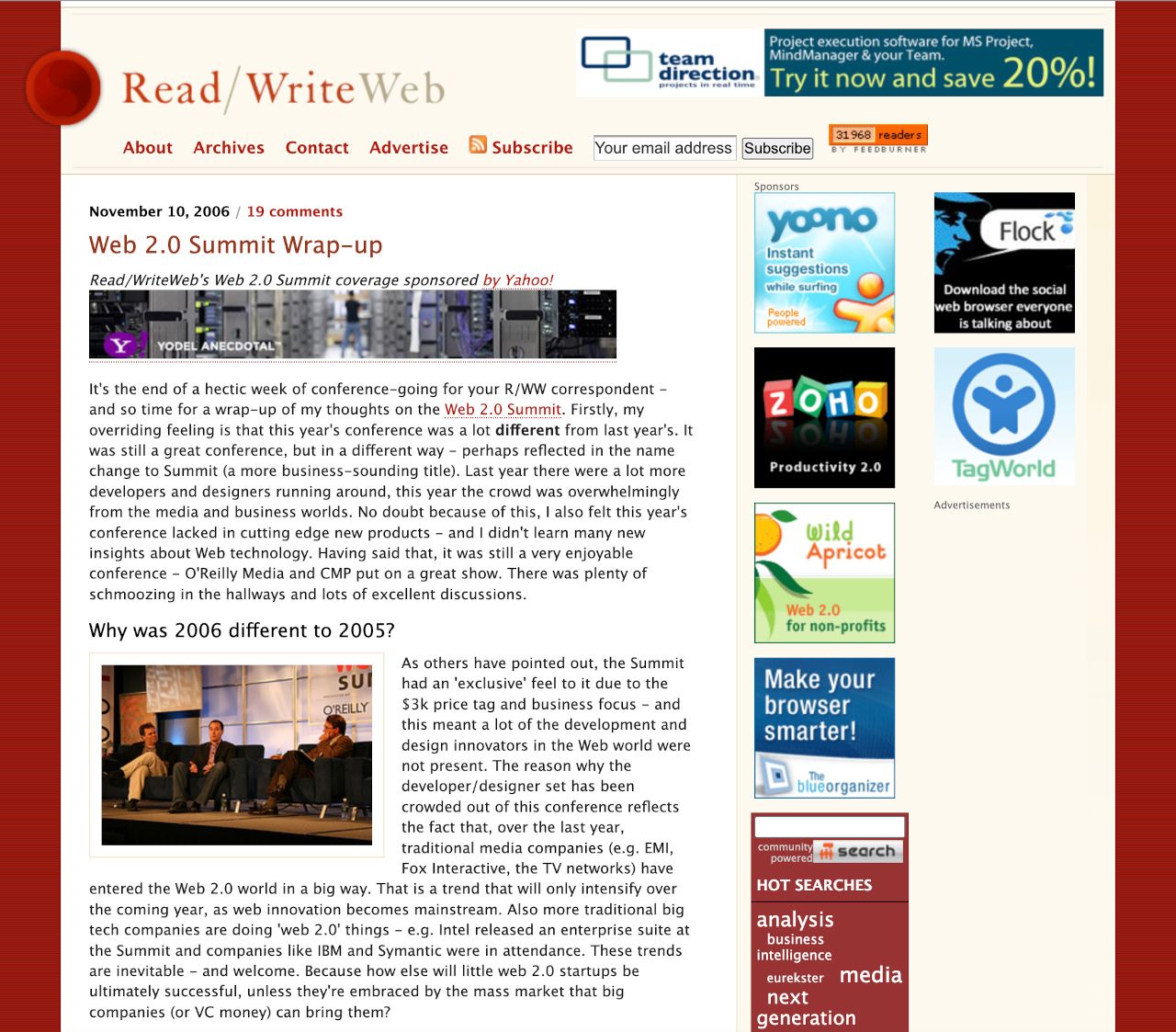
I also noted that “undoubtedly my personal highlight was seeing Lou Reed play live (courtesy of AOL).” This had happened on Thursday evening, and I was in the second row when Lou Reed ambled out onto the stage. He wore a brown sleeveless vest and dark blue jeans, and he looked lean and angry. With the bright blue-and-white logo of AOL illuminated behind him, Lou began playing alongside two band members. But he quickly brought the music to a halt, seemingly annoyed by the chatter in the crowd. “You got twenty minutes,” he growled. “You wanna talk through it, you can talk through it. Or I can turn the sound up and hurt you.” He then demanded that “Frank” turn up the sound, which Frank did—to an earsplitting volume, so that the music now sounded more like Metal Machine Music than New York.
“Who would have thought it would come to this—I’d be playing at a cyberspace conference, brought here by AOL, introduced by my kung-fu brother,” he drawled, referring to the introduction to his set by AOL CEO Jonathan Miller, with whom he apparently shared a tai chi mentor. He began playing “Dirty Boulevard,” a song about the mean streets of New York—about as far removed as it can get from a sponsored stage at an upmarket hotel in San Francisco.
In a desperate attempt to keep the mood upbeat, Tim O’Reilly suddenly got up and started bouncing across the floor. He waved his arms around in a jerky motion, like a geeky facsimile of a sixties wild child. This act of madness or bravery inspired others to get up and dance too, and by the time Lou began strumming the familiar chords of “Sweet Jane,” there was a nerd party happening right in front of me.
Lou glared at O’Reilly and his retinue, perhaps thinking about how much he hated hippies. But he continued his perfunctory performance of his most famous song, and there were no further stoppages. By the end, he was content to let his volume-distorted, East Coast–derived sound waves roll over these strange Silicon Valley cats.
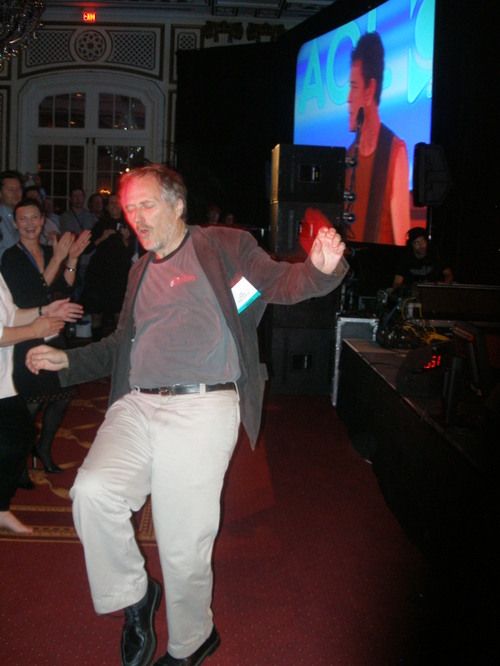
Almost as snarky as Lou was the internet industry critic Nicholas Carr in his summary post about the Web 2.0 Summit. My own blog comments were cited by Carr as among “the tepid reviews of the third annual 2.0 boondoggle.” It was a fair cop, but overall I had enjoyed the event; to quote another Lou Reed song, I was “beginning to see the light” about the business opportunities Web 2.0 was presenting to me. Similar to Lou, I was more than happy to pocket money from sponsors in return for my content.
Lead image: Lou Reed at the Web 2.0 Summit, November 2006; photo by ptufts
This post is part of my serialized book, Bubble Blog: From Outsider to Insider in Silicon Valley's Web 2.0 Revolution. View table of contents.
Next up: 20. Betting on Web 2.0: High Stakes Blogging
Buy the Book
My Web 2.0 memoir, Bubble Blog: From Outsider to Insider in Silicon Valley's Web 2.0 Revolution, is now available to purchase:
- Paperback, US$19.99: Amazon; Bookshop.org
- eBook, US$9.99: Amazon Kindle Store; Apple Books; Google Play
Or search for "Bubble Blog MacManus" on your local online bookstore.